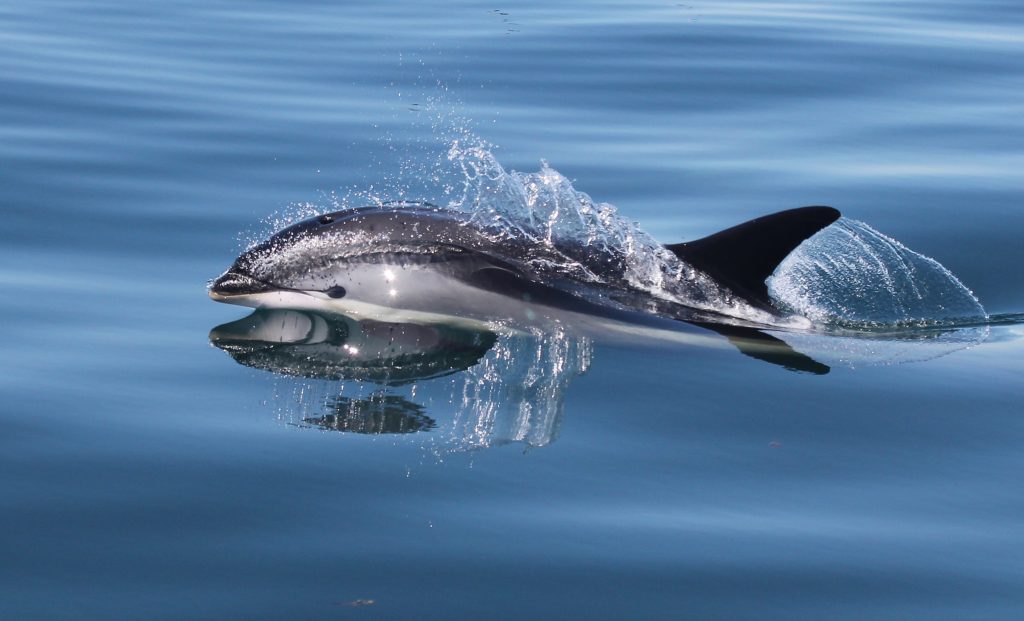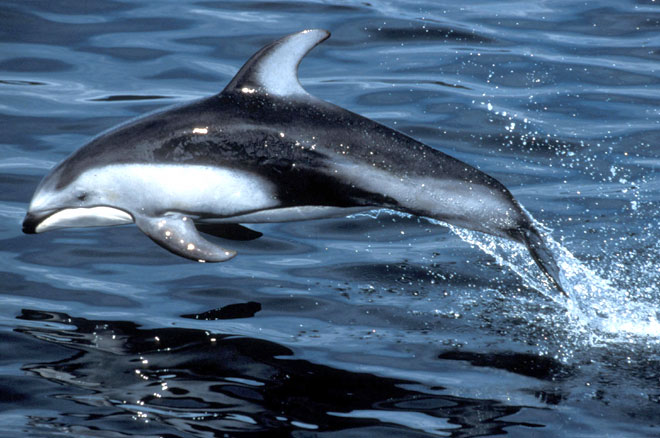The Atlantic White-Sided Dolphin: A Fascinating Marine Creature

The Atlantic White-Sided Dolphin, scientifically known as *Lagenorhynchus acutus*, is a captivating marine mammal found in the cold temperate and subarctic waters of the North Atlantic Ocean. Renowned for its striking appearance and playful demeanor, this species has long been a subject of fascination for researchers and enthusiasts alike.

These dolphins possess a distinctive coloration pattern, with a dark gray or black back, contrasting sharply with a white underside extending from the chin to the tail. Their sides are adorned with a unique combination of light gray, yellow, and white patches, lending them an elegant yet vibrant appearance. Adult individuals typically measure between 7 to 9 feet in length and weigh around 400 to 500 pounds, with males slightly larger than females.

Atlantic White-Sided Dolphins prefer deep offshore waters, where they can find an abundance of their preferred prey, including various species of fish and squid. They are commonly sighted in the waters off the coasts of North America, Europe, and Iceland, particularly in regions with strong currents and upwellings that support high productivity.

Highly social animals, these dolphins are often encountered in large, tightly-knit groups known as pods, consisting of anywhere from a few individuals to several dozen members. They are known for their playful antics, frequently riding the bow waves of ships and engaging in acrobatic displays, such as breaching and somersaulting. These behaviors not only serve as a form of entertainment but also likely play a role in communication and social bonding within the group.

While the Atlantic White-Sided Dolphin is not currently considered to be endangered, it faces a range of threats in its natural environment. These include entanglement in fishing gear, collisions with vessels, habitat degradation, and pollution. Conservation efforts aimed at protecting marine habitats and reducing human impacts on dolphin populations are crucial for ensuring the long-term survival of this species.
In conclusion, the Atlantic White-Sided Dolphin stands as a testament to the remarkable diversity and beauty of marine life in the North Atlantic Ocean. With its striking appearance, playful demeanor, and complex social structure, this species continues to captivate the imagination of people around the world, serving as a reminder of the importance of conservation efforts to safeguard our oceans and the creatures that call them home.



